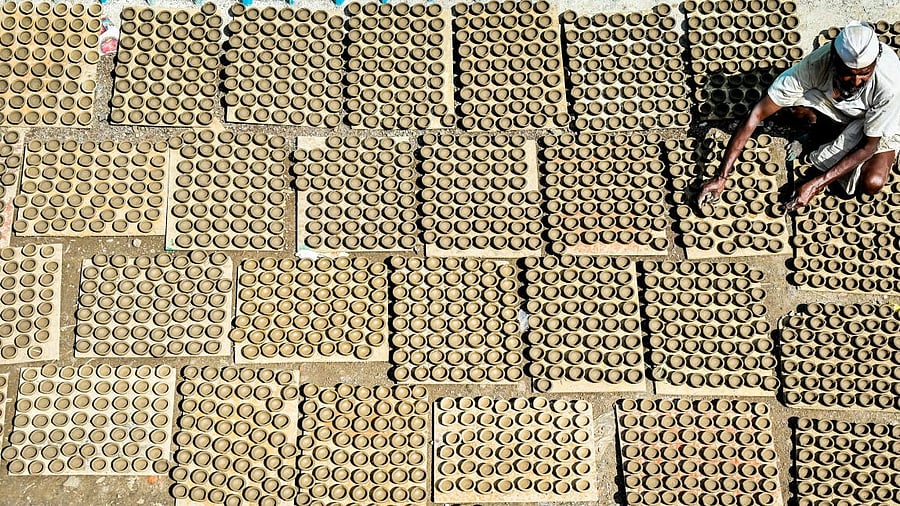
Credit:
Long before the glitter of modern lights took over Deepavali celebrations, the festivities in the state were dominated by earthen lamps. Each molded by hand, these clay lamps reflect a blend of art and livelihood. Today, from Kalaburagi to Belagavi and Mysuru, many potters keep this eco-friendly tradition alive amid competition from factory-made lights.
One such treasure lies in Melkunda K village in Kalaburagi district, where generations of potters continue the craft. The village has around 50 houses of the Kumbar (potter) community and every family begins their day by offering prayers to the clay, revered as Goddess Laxmi.
Melkunda’s earthen lamps are shaped by hand using simple tools and local clay. During the festival season, each family prepares around 60,000 lamps in a month. Wholesale dealers in Yadgir, Raichur, Kalaburagi in Karnataka and in Maharashtra’s Solapur buy the lamps at a price of Re 1 per piece.
"The demand for lamps has been consistent over the last few years, but sourcing clay has become a growing concern. We buy clay locally and the price of quality clay is shooting up. If this continues, we may not be able to sell a lamp at Re 1," shares Pradeep, a young potter from the village.
In Singankoppa near Belagavi’s Khanapur, the potters experiment with varied designs to cater to changing consumer tastes. “Many people feel that the demand for clay diyas is dwindling, but that is not the case for the potters of Khanapur. Customers want a variety of lamps, and we are just doing that. During off-season months, we shift to making earthen cooking pots, which are increasingly popular,” explains potter Krishna Kumbar. His son, who holds a BSc degree, has chosen to continue the family craft.
Among their innovations, the Khanapur potters have created lamps that can glow for up to 24 hours. They also make intricately shaped lamps with the designs of spiritual-and nature-inspired motifs. These products cater to markets in North Karnataka and even neighbouring states.
In Mysuru’s Doora village, home to about 15 potter families, the younger generation is helping keep the craft alive. Women and children help make diyas during Deepavali to meet the seasonal demand.
"Until a couple of years ago, Doora would send around three lakh lamps to Tamil Nadu. But now, we make only 30,000 as the clay diya-making industry has picked up in the neighbouring state. Yet, we are committed to preserving our lamp-making tradition and passing it on to our children,” said potter Devu Shetty.
Through their unique designs, shaped by local environments and traditions, these pottery villages do more than make goods— they preserve Karnataka’s cultural legacy sustainably.